
How to Use SIM900A gsm mosule 01: Examples, Pinouts, and Specs
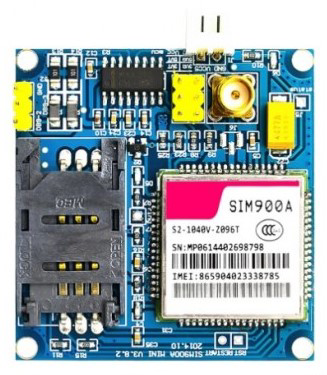
 Design with SIM900A gsm mosule 01 in Cirkit Designer
Design with SIM900A gsm mosule 01 in Cirkit DesignerIntroduction
The SIM900A GSM module is a compact and reliable GSM/GPRS module designed for communication over mobile networks. It allows devices to send and receive SMS, make voice calls, and connect to the internet using GPRS. This module is widely used in IoT applications, remote monitoring systems, and embedded projects requiring mobile connectivity.
Explore Projects Built with SIM900A gsm mosule 01
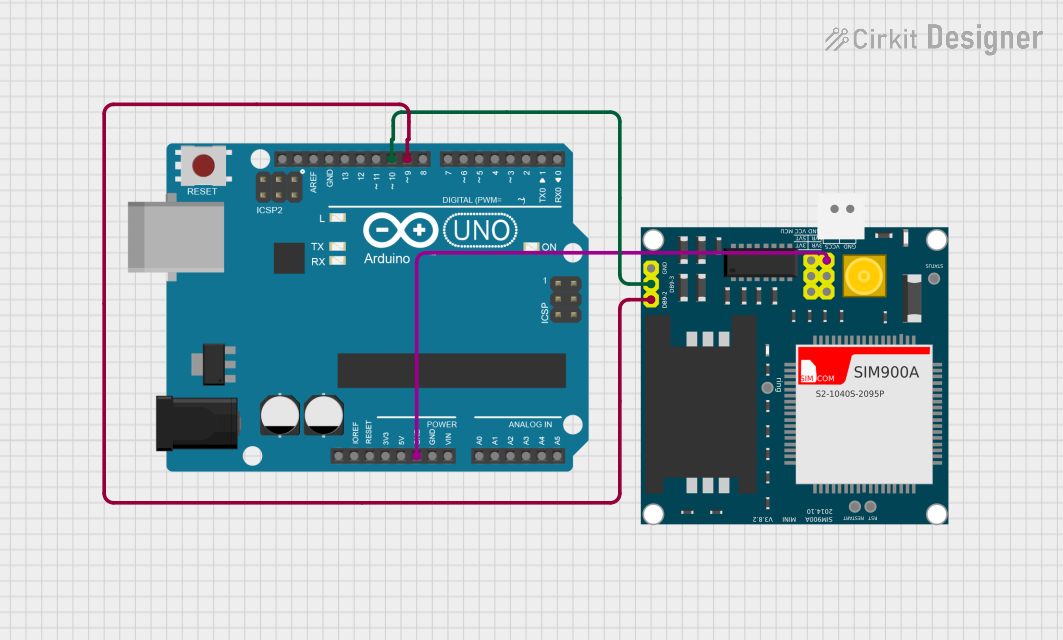
 Open Project in Cirkit Designer
Open Project in Cirkit Designer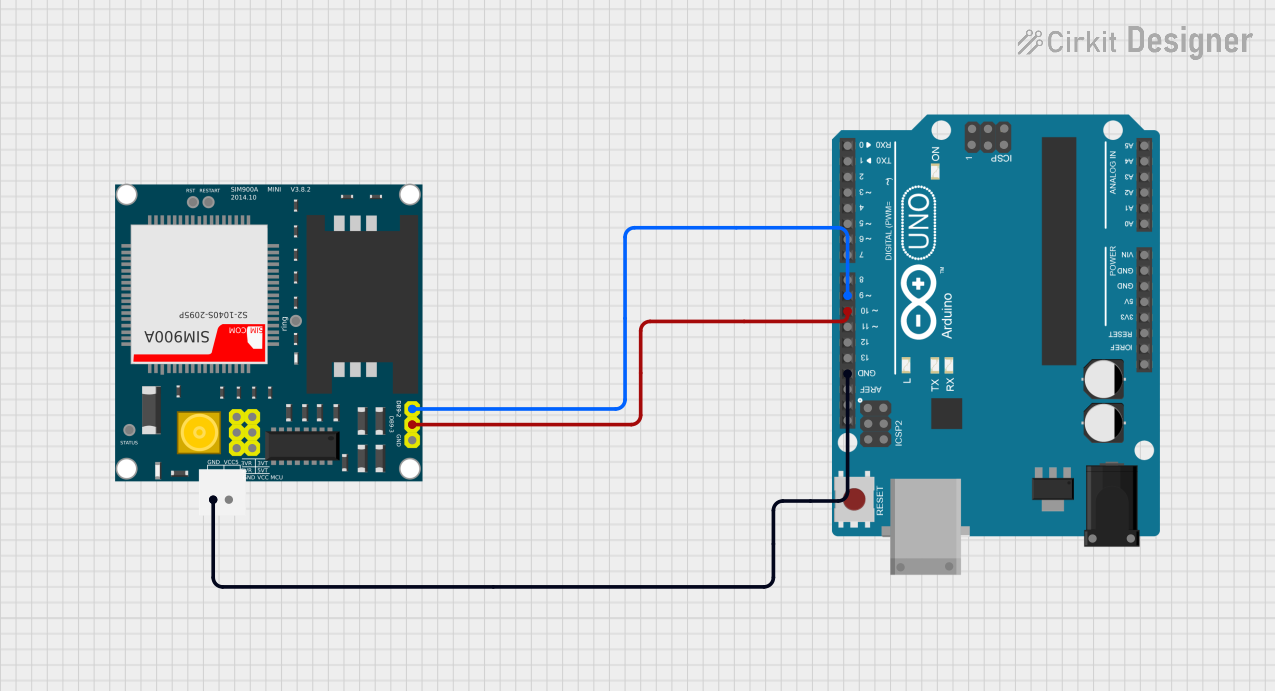
 Open Project in Cirkit Designer
Open Project in Cirkit Designer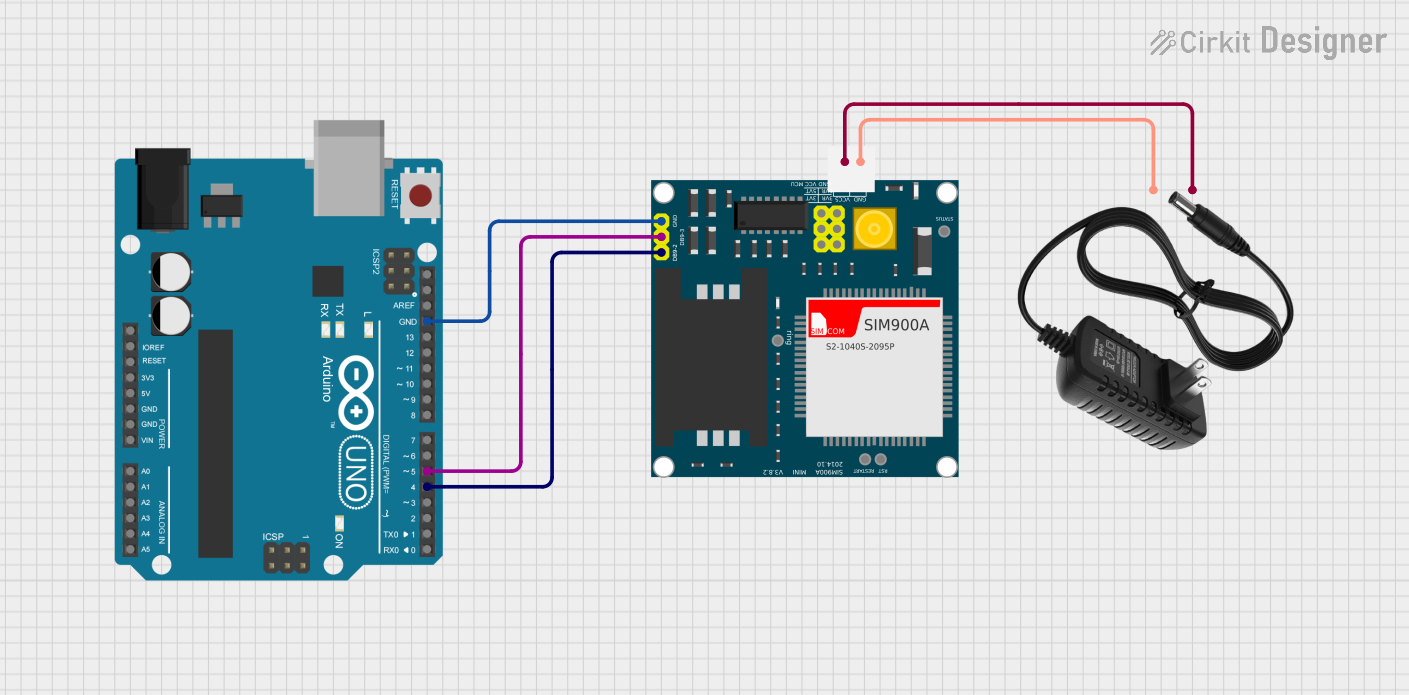
 Open Project in Cirkit Designer
Open Project in Cirkit Designer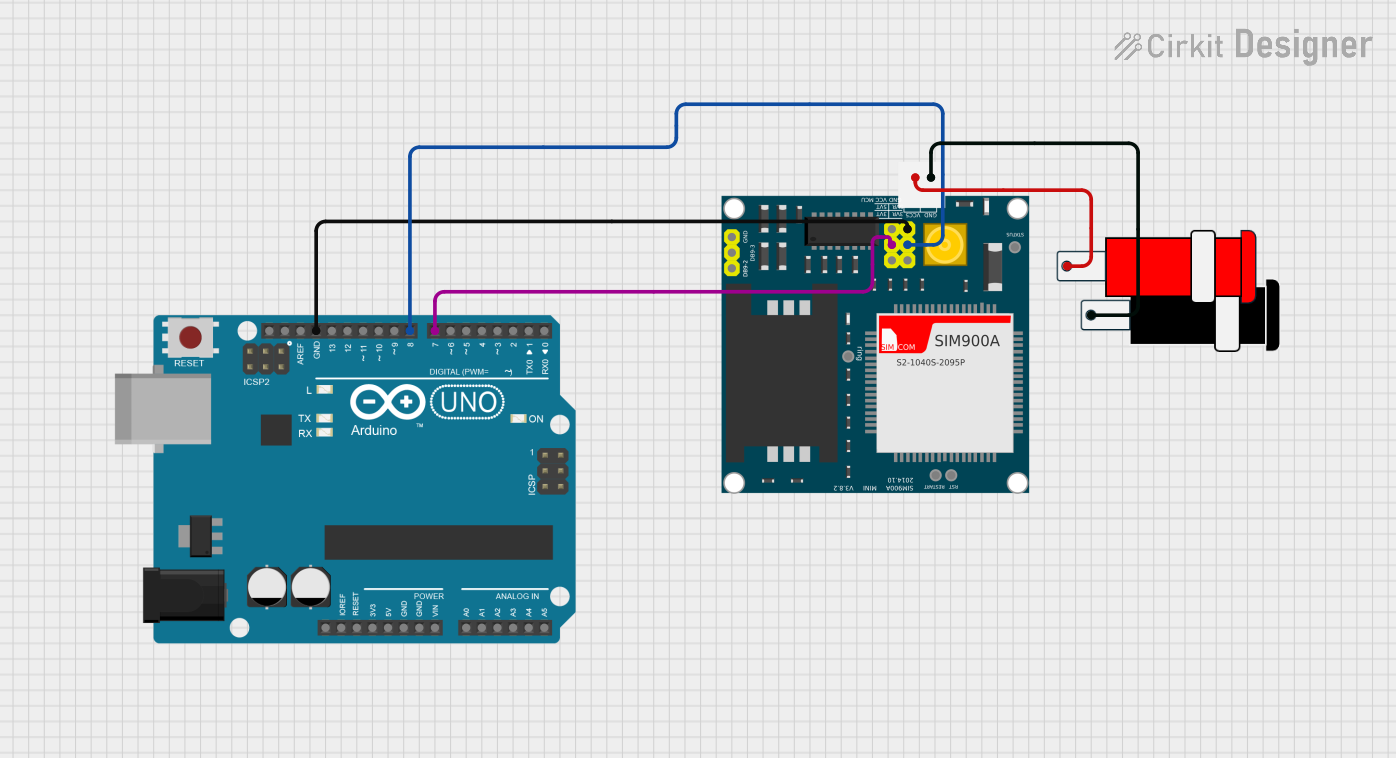
 Open Project in Cirkit Designer
Open Project in Cirkit DesignerExplore Projects Built with SIM900A gsm mosule 01

 Open Project in Cirkit Designer
Open Project in Cirkit Designer
 Open Project in Cirkit Designer
Open Project in Cirkit Designer
 Open Project in Cirkit Designer
Open Project in Cirkit Designer
 Open Project in Cirkit Designer
Open Project in Cirkit DesignerCommon Applications and Use Cases
- IoT Devices: Enables remote communication for smart devices.
- Home Automation: Facilitates SMS-based control of appliances.
- Vehicle Tracking: Provides GPRS connectivity for GPS tracking systems.
- Remote Monitoring: Sends alerts or data from sensors to mobile devices.
- Industrial Automation: Used in systems requiring remote control and monitoring.
Technical Specifications
The SIM900A module is designed to operate efficiently in embedded systems and offers the following key specifications:
Key Technical Details
- Operating Voltage: 3.2V to 4.8V (typical 4.0V)
- Power Consumption:
- Idle: ~10mA
- GSM Transmission: ~200mA (average), ~2A (peak)
- Frequency Bands: Dual-band GSM 900/1800 MHz
- Communication Protocols: GSM, GPRS (Class 10)
- Data Rates:
- GPRS: Uplink 85.6 kbps, Downlink 85.6 kbps
- SIM Interface: Supports 1.8V and 3.0V SIM cards
- Operating Temperature: -40°C to +85°C
- Dimensions: 24mm x 24mm x 3mm
Pin Configuration and Descriptions
The SIM900A module typically comes with a breakout board for easier interfacing. Below is the pin configuration:
| Pin Name | Description |
|---|---|
| VCC | Power supply input (3.2V to 4.8V) |
| GND | Ground |
| TXD | Transmit data (UART output) |
| RXD | Receive data (UART input) |
| DTR | Data terminal ready (for sleep mode) |
| RST | Reset pin (active low) |
| SIM_VDD | SIM card power supply |
| SIM_DATA | SIM card data |
| SIM_CLK | SIM card clock |
| SIM_RST | SIM card reset |
| NET_LED | Network status indicator (blinks) |
| ANT | Antenna interface |
Usage Instructions
The SIM900A module can be easily integrated into a circuit for GSM/GPRS communication. Below are the steps and best practices for using the module:
How to Use the SIM900A in a Circuit
Power Supply:
- Ensure a stable power supply of 4.0V with sufficient current (at least 2A peak).
- Use capacitors (e.g., 1000µF) near the module to handle voltage drops during transmission.
Connecting to a Microcontroller:
- Connect the TXD pin of the SIM900A to the RX pin of the microcontroller.
- Connect the RXD pin of the SIM900A to the TX pin of the microcontroller.
- Use a level shifter or resistor divider if the microcontroller operates at 5V logic.
Antenna:
- Attach a GSM antenna to the ANT pin for better signal reception.
SIM Card:
- Insert a valid SIM card into the SIM card slot. Ensure the SIM card is activated and has sufficient balance for SMS or data usage.
Initialization:
- Use AT commands to configure and control the module. For example:
AT- Test communication with the module.AT+CMGF=1- Set SMS mode to text.AT+CMGS="+1234567890"- Send an SMS to the specified number.
- Use AT commands to configure and control the module. For example:
Example: Using SIM900A with Arduino UNO
Below is an example of how to send an SMS using the SIM900A module and Arduino UNO:
#include <SoftwareSerial.h>
// Define RX and TX pins for SoftwareSerial
SoftwareSerial SIM900A(10, 11); // RX = pin 10, TX = pin 11
void setup() {
// Initialize serial communication
Serial.begin(9600); // For debugging
SIM900A.begin(9600); // For SIM900A communication
// Wait for the module to initialize
delay(1000);
Serial.println("Initializing SIM900A...");
// Test communication with the module
SIM900A.println("AT");
delay(1000);
if (SIM900A.available()) {
Serial.println("SIM900A is ready!");
} else {
Serial.println("No response from SIM900A.");
}
// Set SMS mode to text
SIM900A.println("AT+CMGF=1");
delay(1000);
// Send an SMS
SIM900A.println("AT+CMGS=\"+1234567890\""); // Replace with recipient's number
delay(1000);
SIM900A.println("Hello from SIM900A!"); // SMS content
delay(1000);
SIM900A.write(26); // Send Ctrl+Z to indicate end of message
delay(5000);
Serial.println("SMS sent!");
}
void loop() {
// No actions in the loop
}
Important Considerations and Best Practices
- Use a proper GSM antenna for reliable network connectivity.
- Ensure the power supply can handle the module's peak current requirements.
- Place decoupling capacitors near the module to stabilize the power supply.
- Avoid placing the module near high-frequency noise sources to prevent interference.
- Use AT commands to configure the module for specific applications.
Troubleshooting and FAQs
Common Issues and Solutions
No Response from the Module:
- Check the power supply voltage and current.
- Ensure the RX and TX connections are correct.
- Verify that the SIM card is properly inserted and activated.
Network Registration Fails:
- Check the antenna connection.
- Ensure the SIM card supports the GSM 900/1800 MHz bands.
- Use the
AT+CREG?command to check network registration status.
SMS Not Sending:
- Verify the SMS center number using the
AT+CSCA?command. - Ensure the SIM card has sufficient balance.
- Verify the SMS center number using the
Module Restarts During Transmission:
- Check for voltage drops during GSM transmission.
- Add a 1000µF capacitor near the module to stabilize the power supply.
FAQs
Q: Can the SIM900A module work with 5V logic?
A: No, the SIM900A operates at 3.3V logic. Use a level shifter or resistor divider for 5V systems.Q: How do I check the signal strength?
A: Use theAT+CSQcommand. The response format is+CSQ: <rssi>,<ber>. An RSSI value of 10-31 indicates good signal strength.Q: Can I use the SIM900A for internet connectivity?
A: Yes, the SIM900A supports GPRS. Use AT commands likeAT+SAPBRandAT+HTTPto configure and access the internet.
By following this documentation, you can effectively integrate and troubleshoot the SIM900A GSM module in your projects.